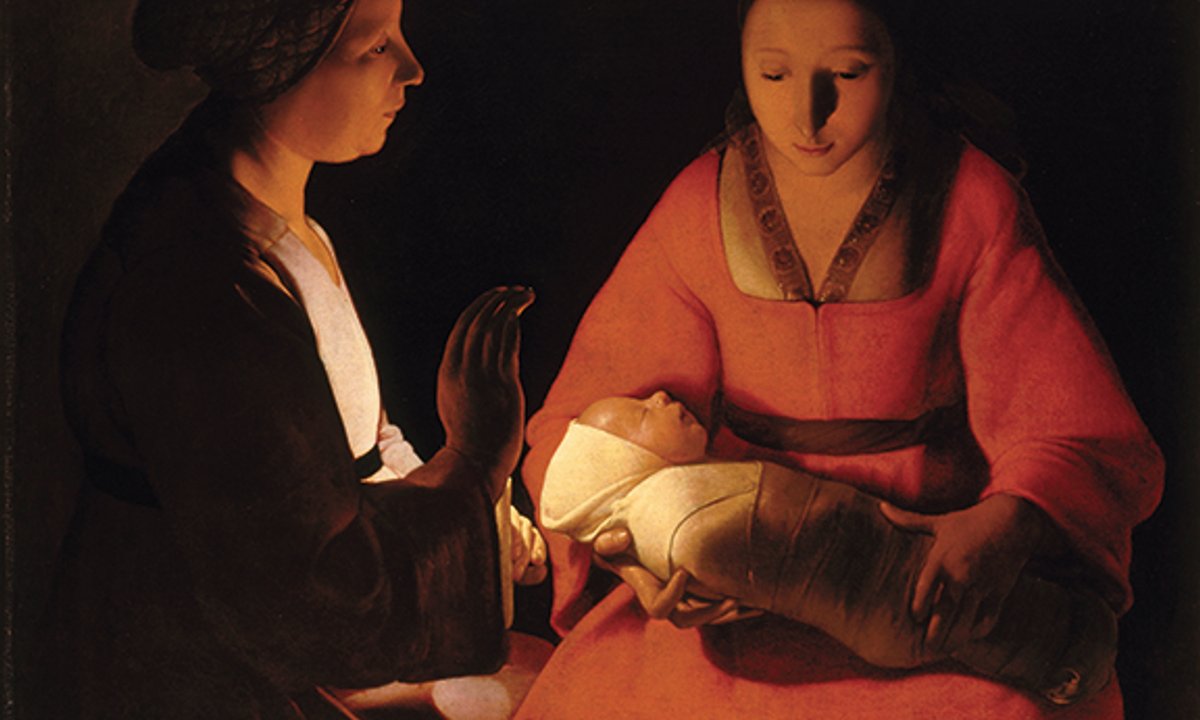
"And yet, not a century earlier, that name was near unknown to anyone who knew anything about the history of painting in France. In fact, it was a German art historian with prodigious visual recall, Hermann Voss, who in 1915 thought to connect two paintings in the Nantes Museum of Fine Arts (respectively signed "GS. de La Tour" and "G. de La Tour") with an unsigned canvas, titled Newborn Child, in Rennes."
"For centuries La Tours had hidden in museum stores under other names: the Netherlandish Caravaggista Gerard van Honthorst; the Spanish artists Jusepe de Ribera, Francisco de Zurbarán and Diego Velázquez; Johannes Vermeer. In a startling illustration of the academy's collective amnesia, even those signed canvases in Nantes were attributed to someone else, a so-called Gerard Seghers. By correcting that mistake, Voss set in motion a quite thrilling chain of rediscoveries. These brought back to life an artist as singular as his known oeuvre is diminutive."
Georges de La Tour remained nearly unknown until 1915, when Hermann Voss connected two signed Nantes paintings with an unsigned Rennes canvas, initiating a broader reassessment. Numerous works formerly attributed to artists such as Gerard van Honthorst, Jusepe de Ribera, Francisco de Zurbarán, Diego Velázquez and Johannes Vermeer were reassigned to La Tour, restoring a distinct but limited body of work. The rediscoveries reestablished La Tour’s singular artistic identity; only 48 paintings are now generally accepted. Current exhibitions, including a Musée Jacquemart-André show, focus on La Tour’s workshop practices and his relation to Caravaggio’s influence.
Read at The Art Newspaper - International art news and events
Unable to calculate read time
Collection
[
|
...
]